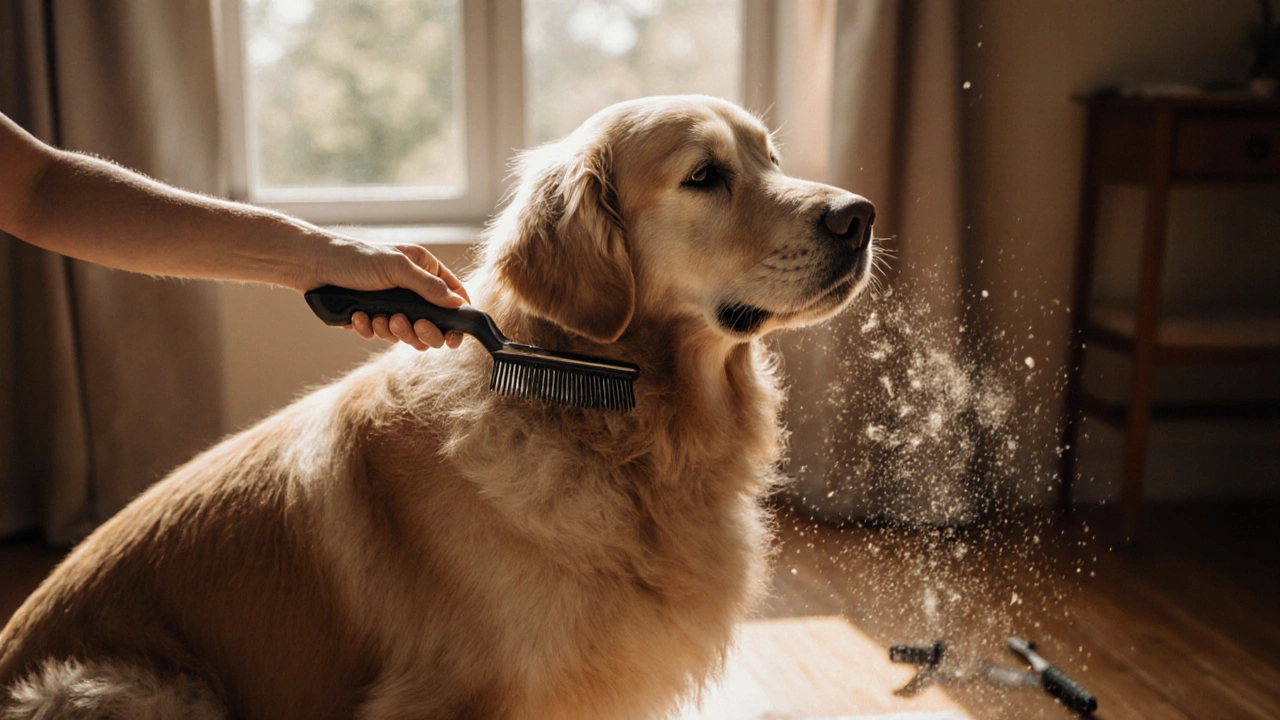Dog Coat Care
When looking after dog coat care, the practice of keeping a dog’s fur clean, healthy and functional. Also known as coat maintenance, it plays a key role in a pet’s comfort and overall wellbeing. A well‑kept coat protects against weather, reduces skin problems, and even signals how a dog feels inside. Understanding the basics sets the stage for everything else you’ll read on this page.
Key Elements of Effective Dog Coat Care
One of the biggest drivers of a glossy, itch‑free coat is dog grooming, regular brushing, bathing and trimming that removes loose hair and distributes natural oils. Grooming isn’t just a cosmetic routine; it’s a preventive health measure. By brushing a few times a week you prevent matting, catch parasites early, and stimulate blood flow, which in turn supports skin health. In short, dog coat care requires regular grooming to keep the fur’s structure intact and the skin breathing properly.
What you feed your dog matters just as much as how often you brush. dog nutrition, a balanced diet rich in omega‑3 fatty acids, protein and essential vitamins, directly influences coat shine and shedding levels. Dogs that get enough linoleic acid and vitamin E tend to have softer, less brittle fur, while deficiencies often show up as dullness or excessive shedding. Therefore, proper nutrition improves coat condition and reduces the grooming workload.
The condition of a dog’s coat is a window into dog health, the overall physical state that includes skin integrity, hormonal balance and immune function. Skin infections, allergies, or hormonal disorders like hypothyroidism often first appear as flaky skin or patchy hair loss. Spotting these signs early lets owners seek veterinary help before problems worsen. In practice, a healthy coat signals that the dog’s internal systems are functioning well, creating a feedback loop between coat care and overall health monitoring.
While grooming and diet form the core, the actual act of cleaning—often called dog bathing, using pet‑safe shampoo and conditioner to remove dirt, oils and parasites—is the final piece of the puzzle. A bath that’s too frequent can strip natural oils, leading to dryness, while an occasional rinse helps remove environmental contaminants and reduces odor. Choosing the right products and water temperature keeps the skin’s pH balanced, supporting the protective barrier that the coat relies on.
Below you’ll find a curated collection of articles that dive deeper into each of these aspects. From step‑by‑step grooming guides and advice on choosing the best dog shampoo, to nutrition tips that boost coat resilience and health checklists that help you spot early skin issues, our posts cover the full spectrum of dog coat care. Whether you’re a seasoned gundog handler or a first‑time pet parent, the insights here are aimed at making your dog’s fur look and feel its best.
Ready to roll up your sleeves? Browse the list below to discover practical tips, expert recommendations, and real‑world solutions that will keep your canine’s coat in top shape all year round.
- Morgan Ainsworth
- 0 Comments
How Often Do Dogs Need Grooming? A Practical Guide for Every Breed
Learn how often different dog breeds need grooming based on coat type, season, and lifestyle. Get practical tips for brushing, bathing, nails, ears, and when to see a professional.
View More- Morgan Ainsworth
- 0 Comments
How Much Grooming Is Normal for a Dog? Your Guide to Healthy Coat Care
Learn the right grooming schedule for dogs based on coat type, health, and lifestyle. Get practical tips, a handy frequency table, DIY basics, and when to book a professional groomer.
View More

